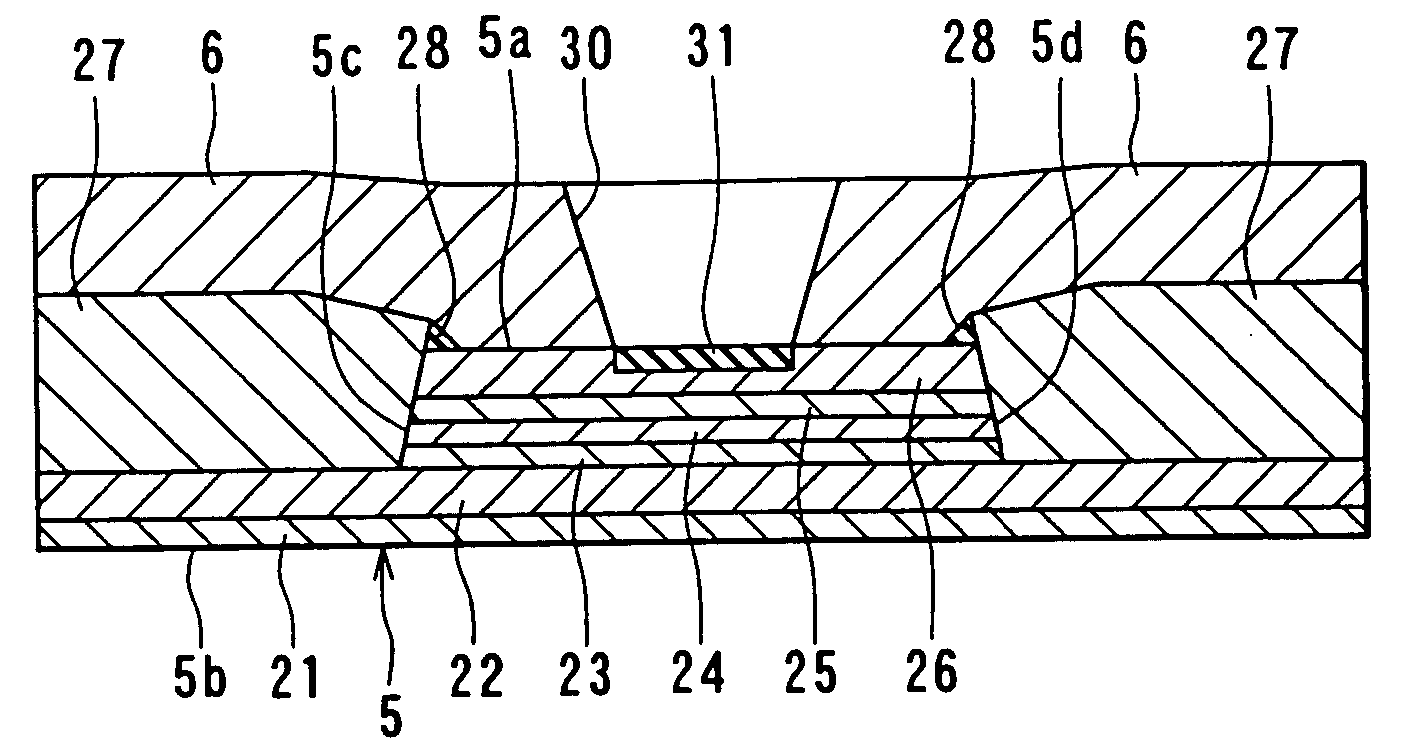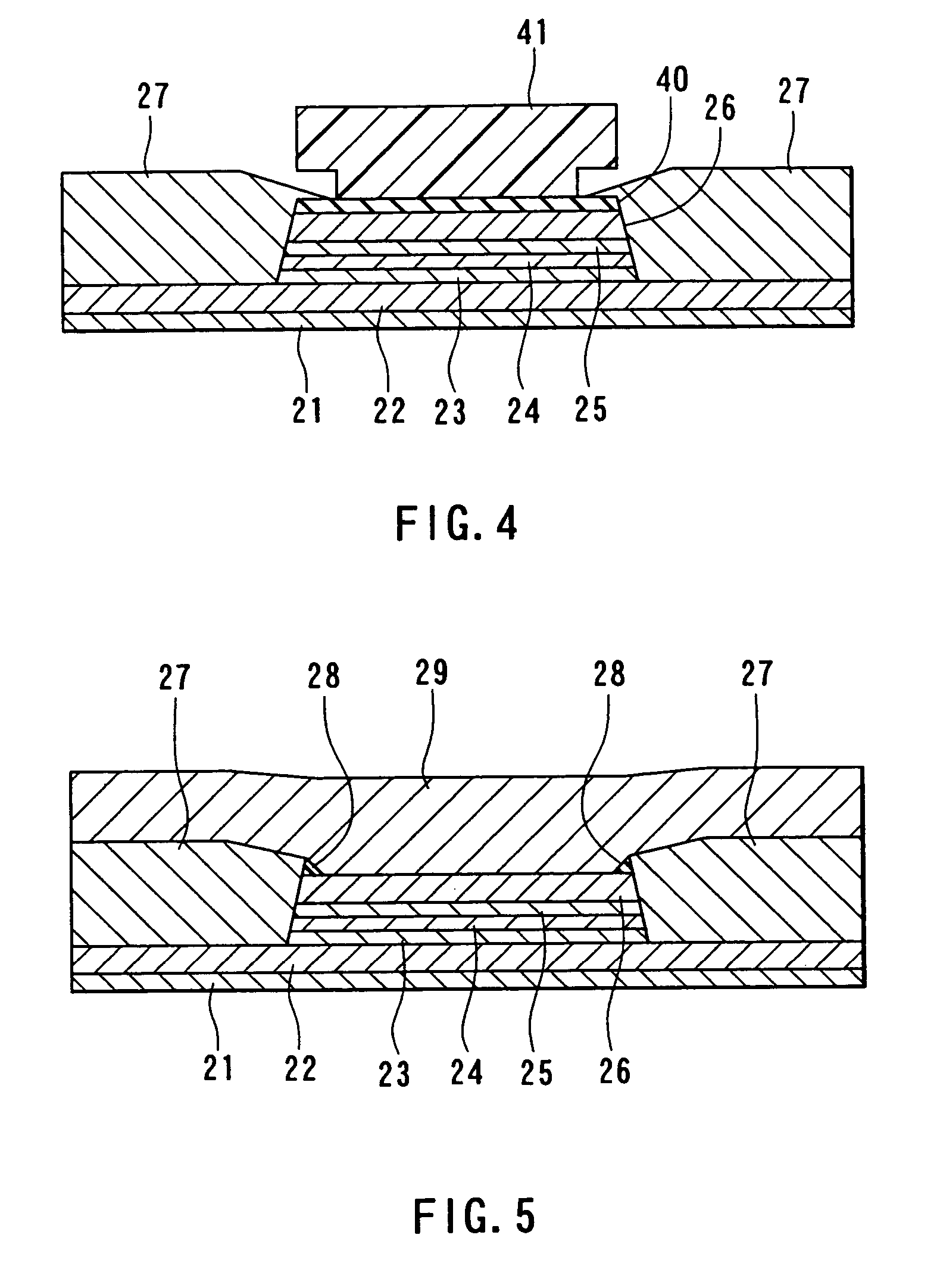Method of manufacturing magnetoresistive device capable of preventing a sense current from flowing into dead regions of a magnetoresistive element, and method of manufacturing thin-film magnetic head
- Summary
- Abstract
- Description
- Claims
- Application Information
AI Technical Summary
Benefits of technology
Problems solved by technology
Method used
Image
Examples
first embodiment
[0069]Reference is now made to FIG. 6A to FIG. 9A and FIG. 6B to FIG. 9B to describe a thin-film magnetic head and an outline of a method of manufacturing the same of a first embodiment of the invention. FIG. 6A to FIG. 9A are cross sections each orthogonal to the air bearing surface. FIG. 6B to FIG. 9B are cross sections of the pole portion each parallel to the air bearing surface.
[0070]In the manufacturing method, as shown in FIG. 6A and FIG. 6B, an insulating layer 2 made of an insulating material such as alumina (Al2O3) or silicon dioxide (SiO2) whose thickness is 1 to 20 μm, for example, is formed through sputtering, for example, on a substrate 1 made of a ceramic material such as aluminum oxide and titanium carbide (Al2O3—TiC). On the insulating layer 2 a bottom shield layer 3 having a thickness of 0.1 to 5 μm, for example, is formed for making a read head. The bottom shield layer 3 is made of a magnetic material such as FeAlSi, NiFe, CoFe, CoFeNi, FeN, FeZrN, FeTaN, CoZrNb, o...
second embodiment
[0134]Reference is now made to FIG. 16 to describe a magnetoresistive device and a method of manufacturing the same, a thin-film magnetic head and a method of manufacturing the same, a head gimbal assembly and a hard disk drive of a second embodiment of the invention. FIG. 16 is a cross section of the magnetoresistive device of the embodiment that is parallel to the air bearing surface.
[0135]According to the magnetoresistive device of the embodiment, the high resistance layer 31 of the MR element 5 is formed through increasing the resistance of the part of the protection layer 26 located in the region between the two electrode layers 6 entirely.
[0136]The method of manufacturing the magnetoresistive device of the second embodiment includes the steps performed until the electrode layers 6 are formed that are similar to those of the first embodiment, as shown in FIG. 1. Through these steps part of the top surface of the protection layer 26 is natural-oxidized and made to have a high re...
third embodiment
[0140]Reference is now made to FIG. 17 to describe a magnetoresistive device and a method of manufacturing the same, a thin-film magnetic head and a method of manufacturing the same, a head gimbal assembly and a hard disk drive of a third embodiment of the invention. FIG. 17 is a cross section of the magnetoresistive device of the embodiment that is parallel to the air bearing surface.
[0141]According to the magnetoresistive device of the third embodiment, the protection layer of the MR element 5 is an Al layer 26a. The high resistance layer 31 of the MR element 5 is an Al2O3 layer. The high resistance layer 31 is formed through increasing the resistance of the part of the Al layer 26a that is the protection layer located in the region between the two electrode layers 6 entirely.
[0142]Reference is now made to FIG. 17 to FIG. 22 to describe a method of manufacturing the magnetoresistive device of the third embodiment. In the method, as shown in FIG. 18, the base layer 21, the antiferr...
PUM
| Property | Measurement | Unit |
|---|---|---|
| Antiferromagnetism | aaaaa | aaaaa |
| Electrical resistance | aaaaa | aaaaa |
| Magnetization | aaaaa | aaaaa |
Abstract
Description
Claims
Application Information
 Login to View More
Login to View More - R&D
- Intellectual Property
- Life Sciences
- Materials
- Tech Scout
- Unparalleled Data Quality
- Higher Quality Content
- 60% Fewer Hallucinations
Browse by: Latest US Patents, China's latest patents, Technical Efficacy Thesaurus, Application Domain, Technology Topic, Popular Technical Reports.
© 2025 PatSnap. All rights reserved.Legal|Privacy policy|Modern Slavery Act Transparency Statement|Sitemap|About US| Contact US: help@patsnap.com



